
Smith Fracture ATL Physio
Forearm fracture/dislocation. The radius and ulna form an anatomical unit, joined throughout their length by an interosseous ligament and stabilised at the elbow and wrist, thus forming a ring. If there is a fracture of the shaft of one of these bones with visible shortening, there will likely be dislocation at the wrist or elbow of the other.

Chapter 2 Dr Vivek Pandey
Smith's fracture. Smith's fractures occur in younger patients and are the result of high energy trauma on the volar flexed wrist. Volar comminution and intraarticular extension are more common. On the left an extraarticular Smith's fracture with palmar and radial angulation and displacement. There is also an avulsion of the ulnar styloid process.

Smith fracture (Frykman IV)
Age: 40 years Gender: Male x-ray Frontal Lateral There is an impacted extra-articular transverse fracture of the distal radius with palmar angulation. Case Discussion The images represent Smith fracture, classically an extra-articular transverse fracture and can be thought of as a reverse Colles fracture. 1 article features images from this case

Smith fracture, Xray Stock Photo Alamy
Introduction Wrist trauma is a common presentation to the emergency department and X-ray is typically the first-line investigation used to identify bony injuries. This guide provides a step-by-step approach to interpreting wrist X-rays and includes examples of the key pathology you may come across. Anatomy

Colle`s and Smith`s fracture YouTube
Overview X-ray of a Smith fracture of the wrist. What is a Smith fracture? A Smith fracture is a specific type of broken wrist. It's caused by falling or experiencing another trauma while your wrist is bent or flexed. There are lots of different bone fractures, and it's easy for the different names to sound confusing.

Dinner Fork Vs Garden Spade Deformity Fasci Garden
Smith fractures usually occur in one of two ways: a fall onto a flexed wrist direct blow to the back of the wrist Radiographic features The fracture can be split into three types, although in practice a description suffices 1,2: type I extra-articular transverse fracture through the distal radius most common: ~85% type II

smith fracture, what to know?
Age: 50 years Gender: Male x-ray Frontal Lateral Lateral, frontal X-ray wrist joint AP and lateral views showing a fracture involving the distal radius with volar angulation of the fractured distal fragment, representing a Smith fracture. Widening of the scapholunate interval is also noted. 2 case questions available Case Discussion
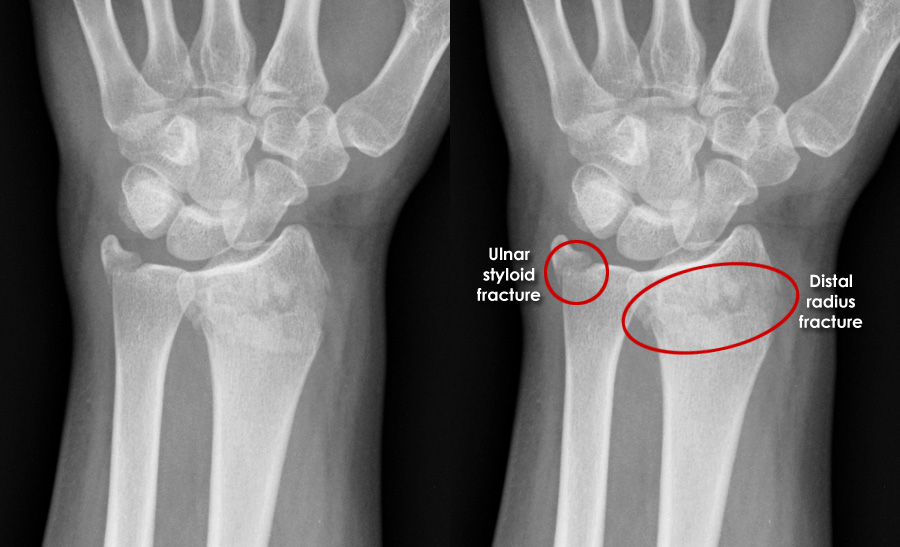
Trauma Xray Upper limb gallery 2 Colles' fracture
Smith's Fracture is a fracture of the distal end of the radius caused by a fall on the back of the hand (flexed), resulting in a volar displacement of the fractured fragment. It is also known as a reverse Colles fracture.
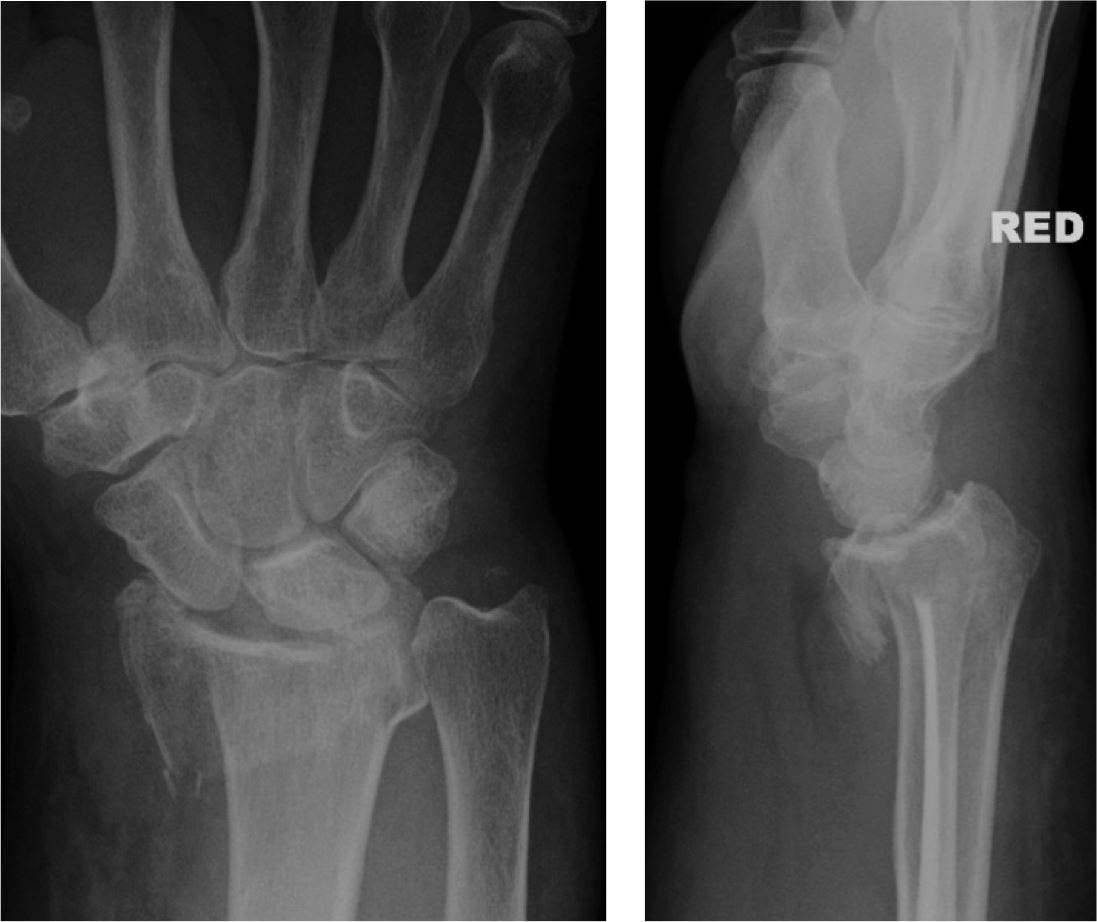
The Wrist
A Smith's Fracture, sometimes also known as a Goyrand Fracture is a distal radial fracture with volar angulation of the distal fracture fragments. It usually results from a fall onto a flexed wrist or from a direct blow to the dorsal forearm. Types of Smith's Fracture
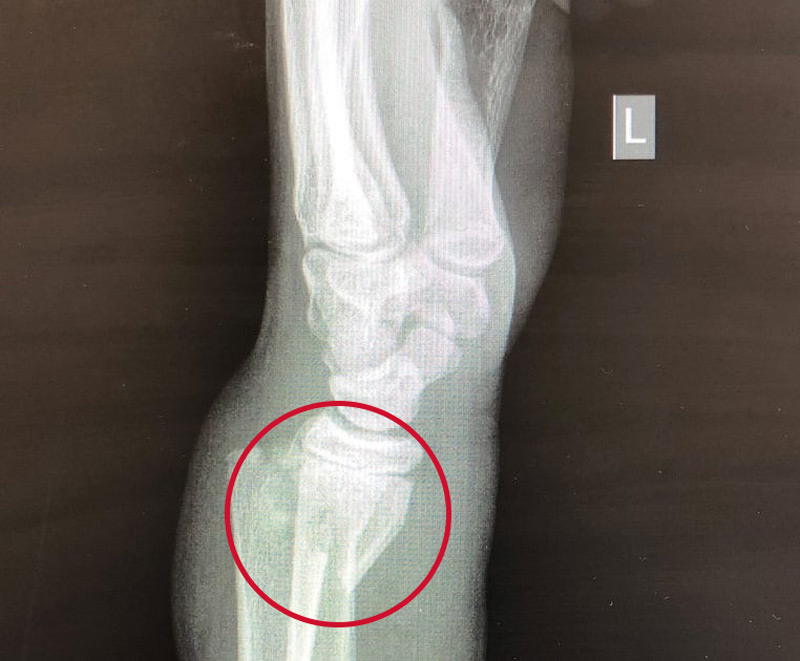
Smith Fracture (Distal Radius Fracture) Definition & Treatment
There are three types of Smith's fractures. Type I is the most common with a transverse break outside the wrist joint. Type II, also called a reverse Barton fracture, is an intra-articular fracture, or a fracture that occurs on the articular surface (i.e., joint surface) of the radial-ulnar joint.
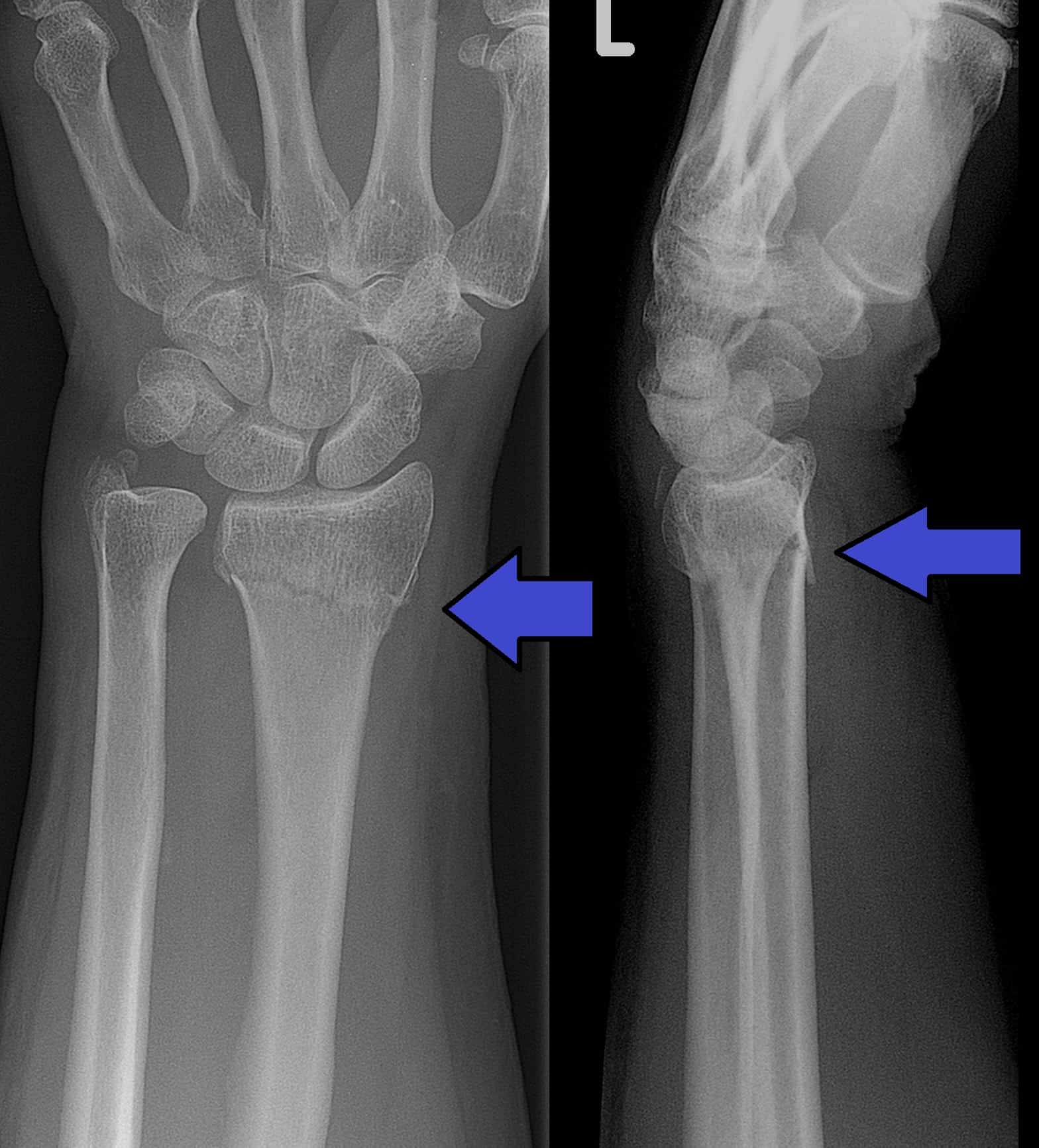
Explaining What Smith's Fracture Is Physioroom Blog
Smith fracture - mechanism of injury, X-ray, treatment Smith fracture is a fracture of the distal radius. Although it can also be caused by a dire Show more Show more 1y ago ORTHOfilms

Common Distal Radial Fractures UW Emergency Radiology
A short lecture on the X-ray findings in Smith's fracture with clear X-ray illustrations.
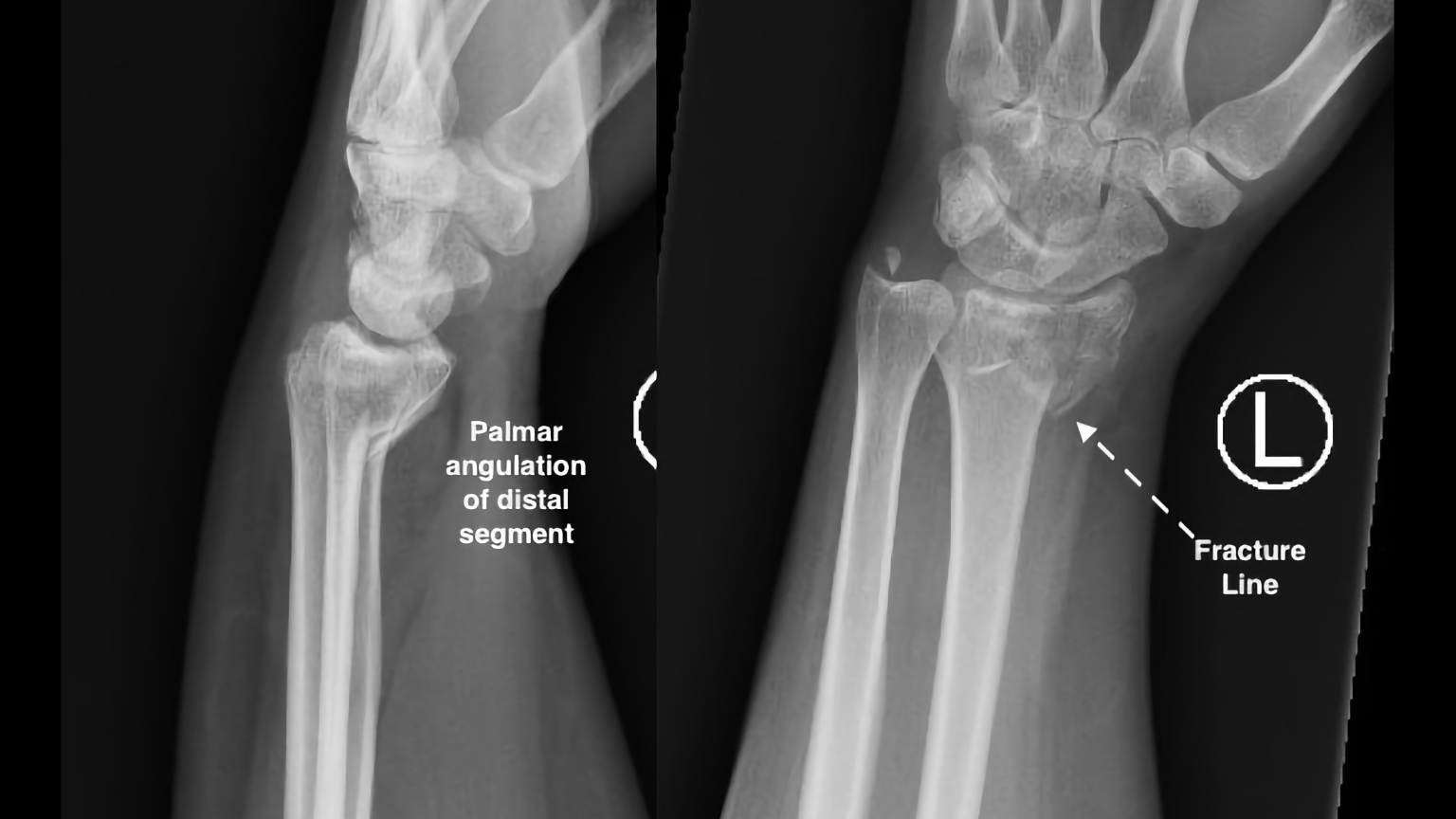
Wrist Xray Interpretation OSCE Guide Geeky Medics
A Smith's fracture, is a fracture of the distal radius. [1] Although it can also be caused by a direct blow to the dorsal forearm [2] or by a fall with the wrist flexed, the most common mechanism of injury for Smith's fracture occurs in a palmar fall with the wrist joint slightly dorsiflexed. [3]

Smith's fracture (lateral Xray) Orthopedic surgeon is my dream job…
A Smith fracture is an eponym for an extraarticular fracture of the distal radius featuring a volar displacement or angulation of the distal fragment. It is also known as a reverse Colles fracture since the more common Colles fracture features a dorsal displacement of the distal fracture fragment.
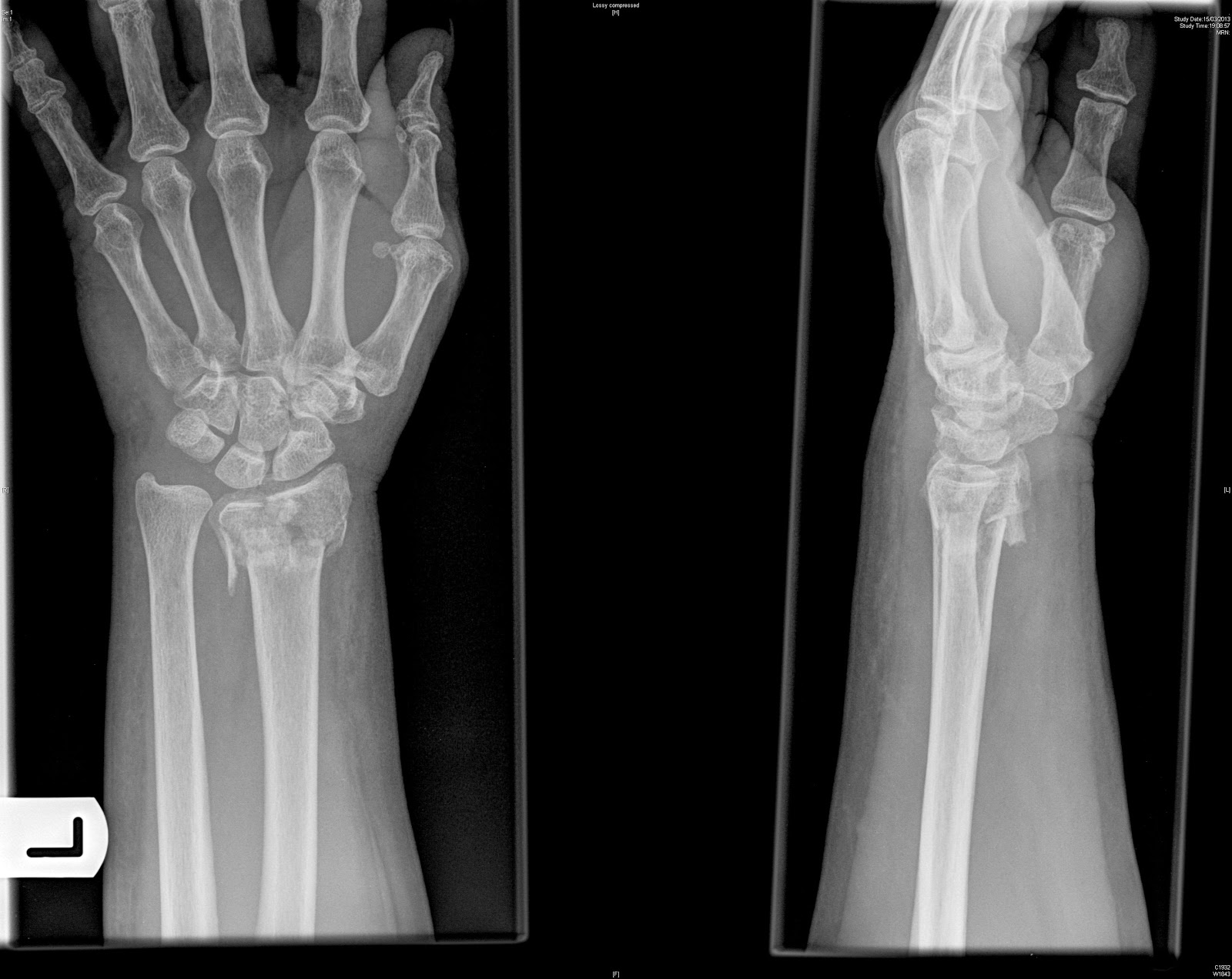
Fracture Treatment Osteoporotic Fracture
This injury produces what is known as a "garden-spade" deformity on X-Ray. Colles' and Smith's fractures often occur in isolation but can have other associated injuries. Isolated radial shaft fractures can occur at any location along the bone. The mechanism of injury for isolated distal third radial shaft fractures is similar to Smith.

Pin on A & G MCQ
Presentation History of fall on a flexed wrist Patient Data Age: Adult Gender: Male x-ray Impacted fracture of the distal radius with palmar angulation and evidence of intra-articular involvement. There is also ulnar styloid fracture. Case Discussion The images represent Smith fracture 2 articles feature images from this case